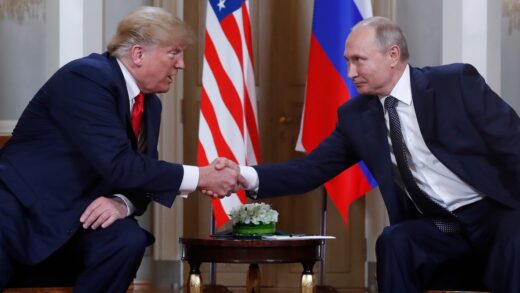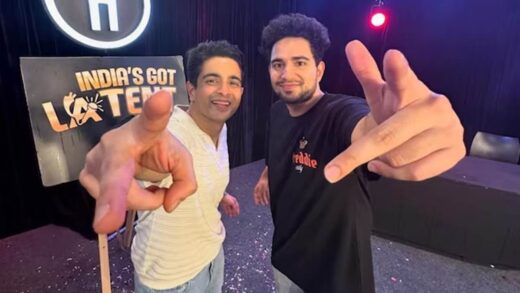Peel back the layers of any fashion capital, and you’ll uncover something undeniably distinct. For some cities, it’s the weight of history, the vibrancy of their culture, or the allure of their culinary delights. But for others, it’s the creative energy that defines them—where the fashion scene is more than just a set of trends; it’s a living, breathing ecosystem that mirrors the spirit of its people. Enter Copenhagen and, of course, Copenhagen Fashion Week.
Over the last few years, the small but mighty Danish capital has stolen the spotlight from Paris and Milan with a new wave of homegrown designers and a fresh Scandinavian aesthetic that has sparked global fascination. Copenhagen isn’t just a city—it’s a force redefining luxury and what it means to be a key power player in the industry. Ask any fashion editor, and they’ll tell you that CFW is the event they’re most excited to see unfold.
Copenhagen’s fashion scene feels like an antidote to the hypercompetitive, high-stakes atmosphere of other fashion capitals. While places like Paris and New York are known for their fierce rivalry and sharp elbows, Copenhagen thrives on a spirit of cooperation and creative exploration. The governing Copenhagen Fashion Week council requires participating brands to meet stringent eco-conscious and diversity standards. Unlike the cutthroat atmosphere of Paris or New York—where the competition can feel like an Olympic sport—Copenhagen exudes a welcoming, collaborative spirit. It’s less about elbowing your way to the top and more about lifting each other up.
Of course, there are challenges. Budgets are tight, resources are limited, and international press coverage can’t always compete with the media frenzy in Milan or London. But here’s the thing: In Copenhagen, it’s not about competing with the big players—it’s about collaboration, innovation, and, above all, community. Designers here are invested in each other’s success, which perhaps is why it feels so refreshingly authentic. Copenhagen and its crew of cool Scandi and Nordic brands are shaping the future of fashion on their own terms.
(Image credit: Courtesy of brands and Copenhagen Fashion Week. Images of designers: Getty Images.)
Danish designer Stine Goya, who launched her eponymous label in 2006, has been at the forefront of the scene in Copenhagen. The brand returned once again to the calendar this season, presenting a colorful, intimate look at its fall/winter 2025 collection, filled with hand-painted floral patterns and childlike wonder in an homage to the seasons and Goya’s takeover of the museum where the brand hosted its show.
For those unfamiliar with the brand and your work, how long have you been working in the industry?
I founded my brand back in 2006 and launched A/W 2007 as my first collection at CPHFW. In 2017, we celebrated our 10-year anniversary almost at the same time as we had our international breakthrough with our significant use of colors, our own studio-made artistic prints, and bold, sculptural, and feminine styles and dresses. Since then, we have been growing the company and are stocked in more than 200 doors all over the world, with our home markets—the UK and the U.S.—as focus markets for both wholesale and own e-commerce.
What is one thing you wish people knew about what goes on behind the scenes during fashion week?
Everybody on the team is working super hard to make sure it all comes together and to create a special and coherent experience presenting the new collection and the narrative behind it for the audience, buyers, and press. We always strive to link all elements—the new collection, our showroom, the fashion show, the venue, the music, the models, hair, makeup, etc.,—together to amplify the storytelling and content creation from the presentations.
One thing I’ve noticed about many of the brands in Copenhagen is that they rely on each other, with the creative community being abundant, several of the same production teams, set designers, stylists, photographers, or even designers working with each other to pull off a seamless week. It feels like everyone is supportive of each other and works together. Are there any special stories you can share about the creative community in Copenhagen when it comes to working together on the success of your brand?
Copenhagen is a small city compared to many other capitals. Very small. I think we have learned that by working together and supporting within areas that all of us can benefit from, share visions on responsibility, etc. We become stronger and the fashion week more attractive and interesting. When we help each other and have open dialogue, it is easier to dare to do new things, test boundaries, etc. Our show this season at the venue 4.5 hours from Copenhagen by train becomes possible only because we support each other, share a vision, and believe in it. And it happened. Together with CPHFW, we managed to bring a little but strong group of press, influencers, and fem buyers to Aalborg to see our show at the amazing art museum Kunsten Museum of Modern Art Aalborg.
What do you hope people take away from your collection this season?
I hope they see a feminine, but still fun and bold Stine Goya collection in the most dreamy scenario and how important is to me when art, fashion, and architecture meet.
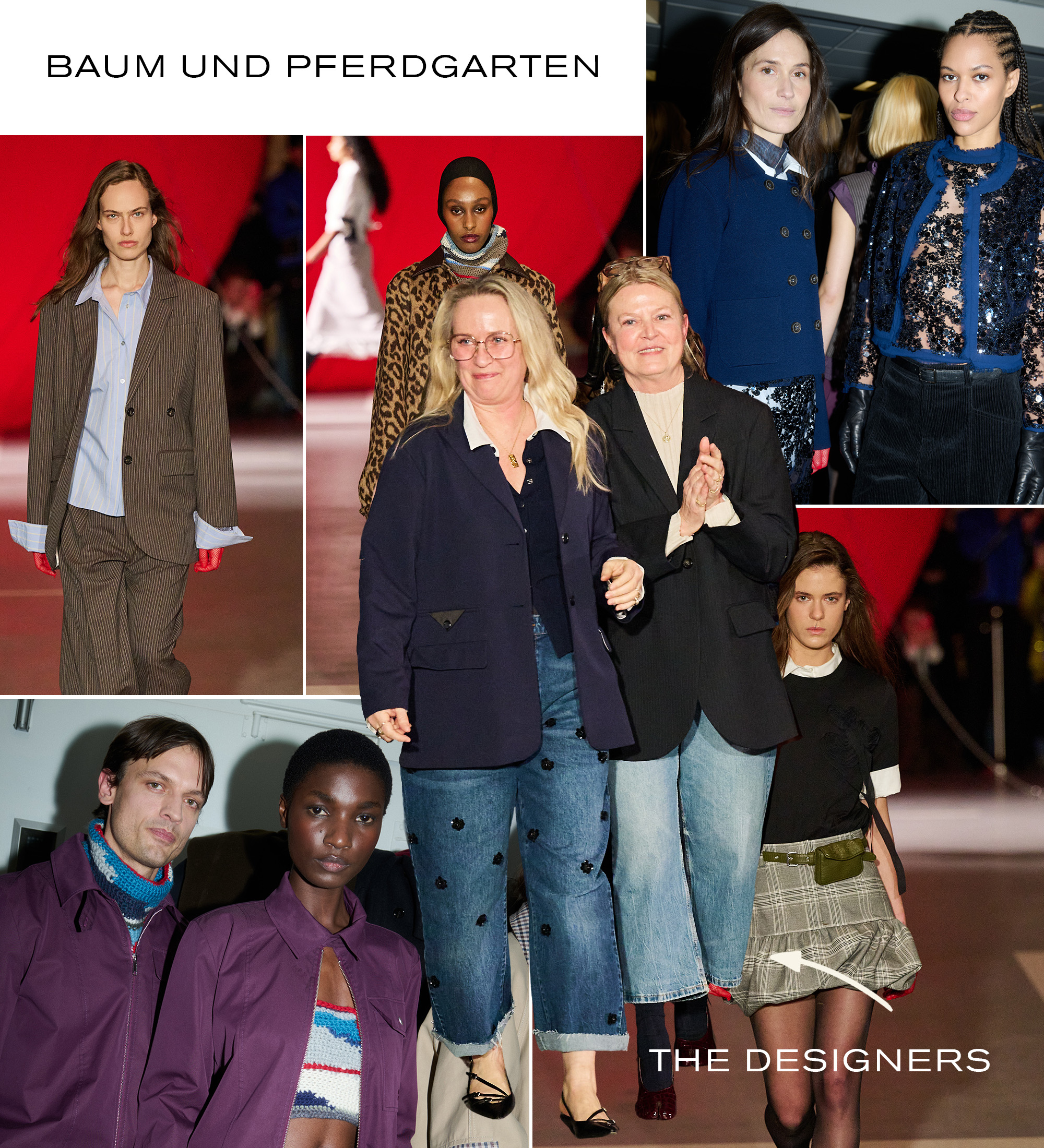
(Image credit: Courtesy of brands and Copenhagen Fashion Week. Images of designers: Getty Images.)
Rikke Baumgarten and Helle Hestehave have been working together for decades, first as students and now as heavyweight hitters during Copenhagen Fashion Week. The brand’s recent collection, “Heartbeats,” was a masterful lesson in pattern and print play for the brand, whose looks were filled with leopard jackets, glitter lace cardigans, and, of course, a rhinestone-embellished bag seen at all Baum und Pferdgarten’s shows (last season’s was a soccer ball).
For those unfamiliar with the brand and your work, how long have you been working in the industry?
We started the brand back in 1999, right after we graduated from the Royal Danish Academy. Started in Helle’s bedroom and the rest is history!
I’d love to hear a bit more about the collection and this season’s show, especially as it pertains to production and actually putting on an entire runway spectacle. How long does the process take, from ideating to actual execution?
It takes roughly a year from when we start finding the theme for the collection to show it during Copenhagen Fashion Week. The collection we showed this season is called “Heartbeats” and is a love letter to free-spirited individuality and the thrill of embracing what makes the heart skip a beat. It is inspired by the contrasts between the serene charm of the British countryside and the expressive vibrancy of more retro and rustic times, the collection brings together cherished elements in a playful, “no rules” philosophy.
What do you find special, innovative, or exciting about showing in Copenhagen?
Copenhagen is our hometown; this is where we founded the brand, so it therefore makes perfect sense for us to show our collections here. There is a sense of true family feeling during Copenhagen Fashion Week. It is always lovely to see everyone come back season after season, so it almost feels like a small reunion every time.
What is the first thing you’re looking forward to doing once your show is over?
Sleep, eat and drink! And to be with our families.
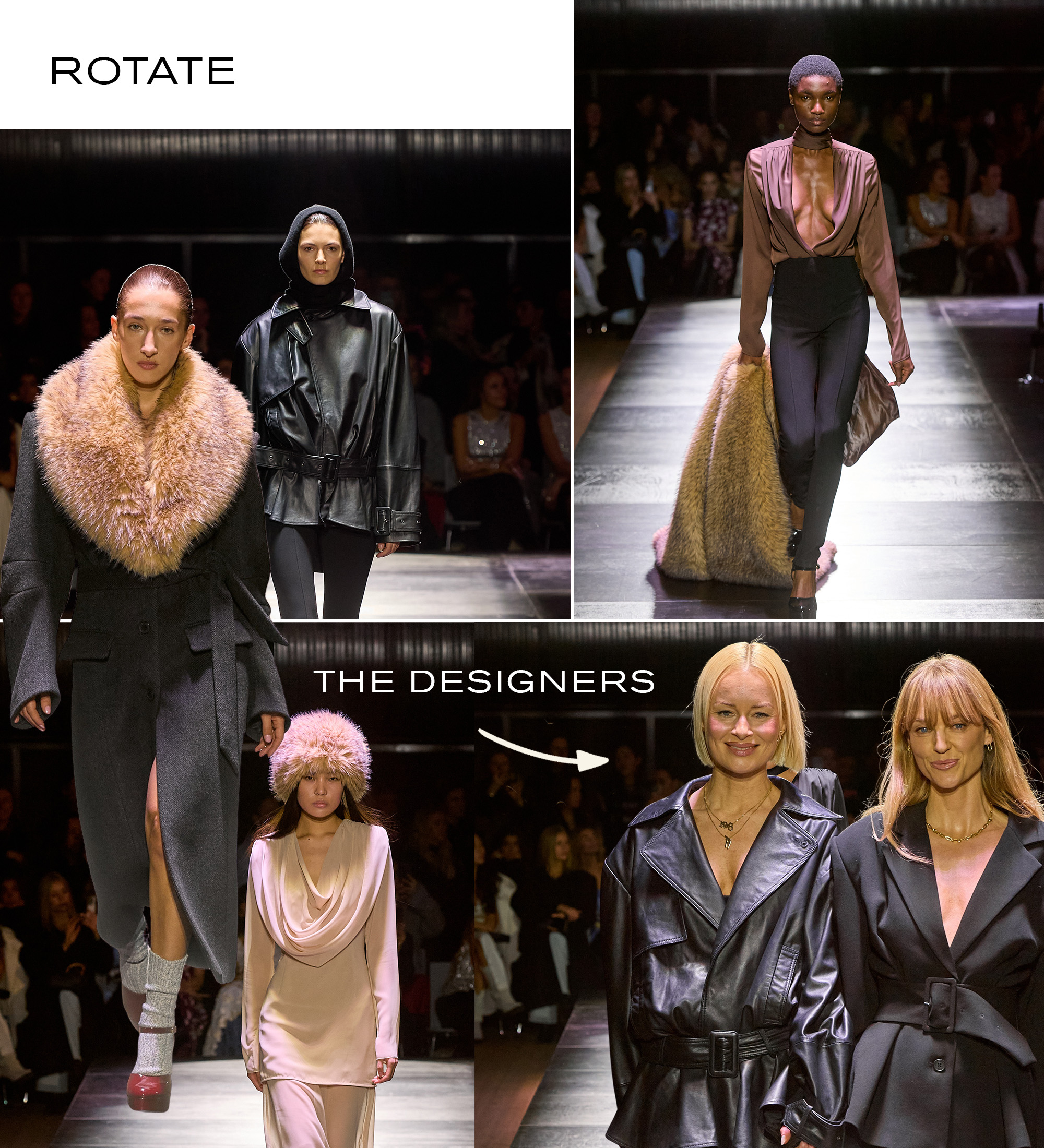
(Image credit: Courtesy of brands and Copenhagen Fashion Week. Images of designers: Getty Images.)
Anyone who’s anyone is itching for a seat at the Rotate show—a highlight for many during Copenhagen Fashion Week. The brand, internationally beloved by editors and It girls alike, often closes out the week of festivities. Designers Jeanette Madsen and Thora Valdimarsdottir have been at the helm of the fête-inspired ready-to-wear brand since 2018, completely changing the industry and leading the way for a sexier, more scandalous Scandinavian party aesthetic that’s become synonymous with Rotate’s fans.
I’d love to hear a bit more about the collection and this season’s show, especially as it pertains to production and actually putting on an entire runway spectacle. How long does the process take, from ideating to actual execution?
Jeanette Madsen: The process starts long before the show with brainstorming ideas, sketching designs, and sourcing fabrics that align with the season’s theme. After that, we move into development—creating prototypes, refining the details…
Thora Valdimarsdottir: From there, the real magic happens in the production. The logistics of putting on a runway show are no small feat—finding the right venue, assembling the team, coordinating fittings and rehearsals, and then making sure everything flows perfectly. It’s about four to six months of intense work, but the adrenaline of seeing everything come together on the day of the show makes it all worth it. Every detail counts—from the models’ walk to the lighting to the music. It all tells the story of the collection.
One thing I’ve noticed about many of the brands in Copenhagen is that they rely on each other, with the creative community being abundant, several of the same production teams, set designers, stylists, photographers, or even designers working with each other to pull off a seamless week. It feels like everyone is supportive of each other and works together. Are there any special stories you can share about the creative community in Copenhagen when it comes to working together on the success of your brand?
TV: There’s this unspoken understanding that we’re all in it together. I feel it’s so incredible how you can easily spot designers and creatives from other brands supporting each other in the shows. That sense of community is what makes showing in Copenhagen so different from anywhere else.
Be honest—have you slept?
JM: It’s such an intense period that running on little to no sleep just comes with the territory. Between final fittings, team check-ins, and those inevitable last-minute changes, there’s barely a moment to stop. The exhaustion only really hits after!
What do you hope people take away from your collection this season?
JM: We want people to feel like they want to wear the pieces right away after they see them on the runway. The styling is also a bit toned down to achieve that effortless but elegant Scandinavian vibe.
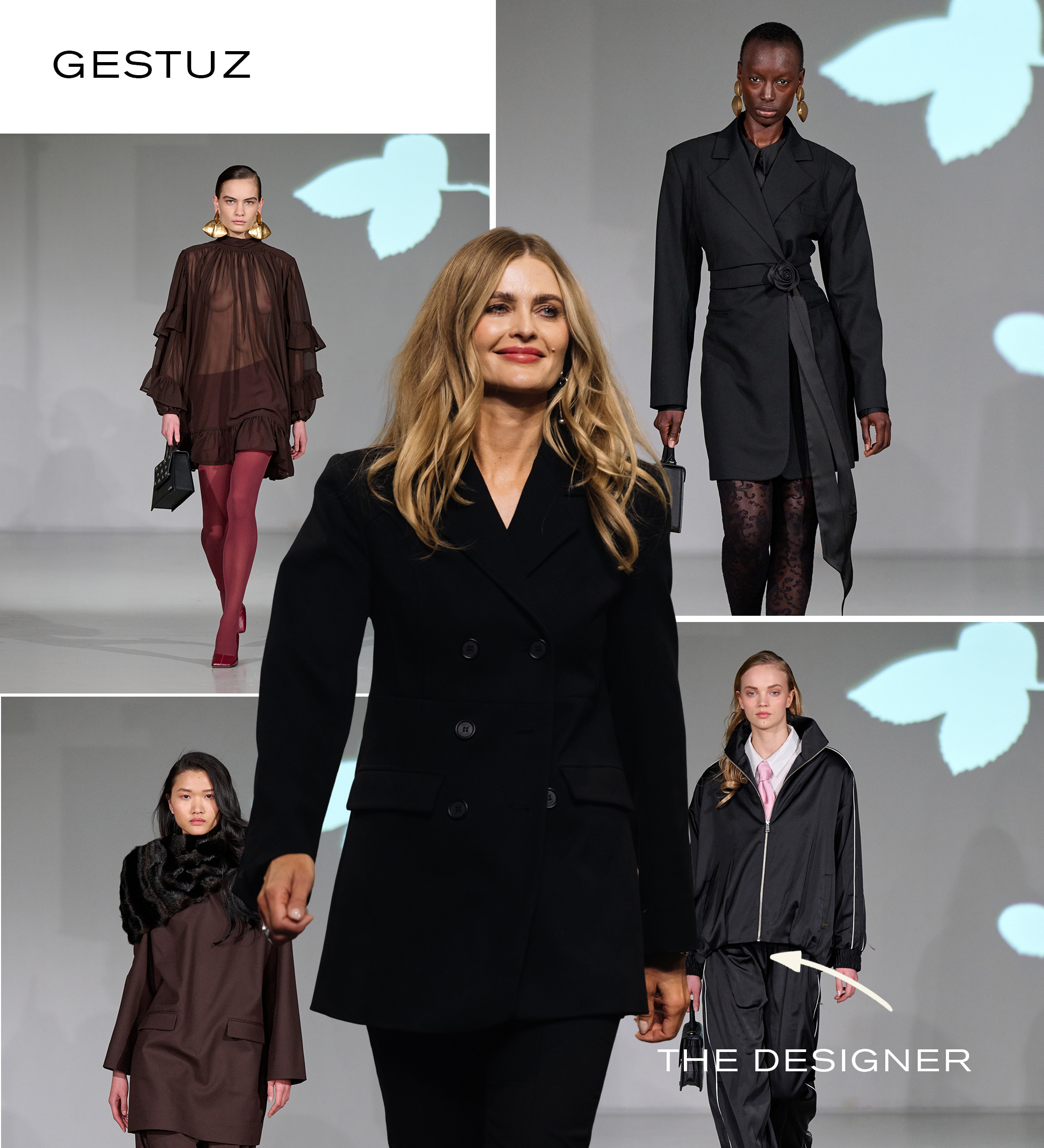
(Image credit: Courtesy of brands and Copenhagen Fashion Week. Images of designers: Getty Images.)
Gestuz was founded in 2008 by Sanne Sehested and is one of the most established brands on the Copenhagen Fashion Week calendar. This season was focused on love stories—most notably, the one within oneself. Romantic, rose-inspired prints, corporate dressing, and innate femininity were present throughout the collection, a nod to Sehested’s reign as one of the top female designers in Scandinavia.
For those unfamiliar with the brand and your work, how long have you been working in the industry?
I started when I was 15 years old working in a clothing store. Since then, I managed to get familiar with many aspects of the industry, everything from design to sourcing and sales. In 2008, I was fortunate enough to be able to start Gestuz, and the rest, as you say, is history.
When most people imagine runway shows, they imagine these massive, elaborate sets and designs with hundreds of attendees and hundreds of thousands of dollars in budget, often paid by big corporations. Most of the labels showing in Copenhagen are independently owned, and naturally, much leaner and sincere in scale. What are some challenges you find you face as a smaller or independent brand or founder when it comes to pulling off fashion week?
I don’t think so much about the challenges as we have never tried anything other than this. However, I think it allows us to work with newer, up-and-coming partners and find solutions that require creativity and thinking in new ways. I think this actually also goes well with the Danish mentality and how I enjoy working. It’s more intimate and a necessity to work closely together.
What does your day look like the morning of a show? Are there any routines or pre-show rituals you partake in to ease the stress or set the tone for the day?
The most important thing for me is to be on location from the beginning. I always wake up super early. It’s so important for me to be there seeing the whole set being built up, taking in the buzz backstage, talking with my team, and trying to stay calm. There is always such a good vibe backstage. We work with such a great team, everybody is so professional, doing their thing and keeping the stress level as low as possible. It’s such a pleasure to just take it all in even though the nerves build up during the day.
What is the first thing you’re looking forward to doing once your show is over?
Celebrate and drink champagne with my team! None of this would be possible without my team and I just want to enjoy the evening with them.
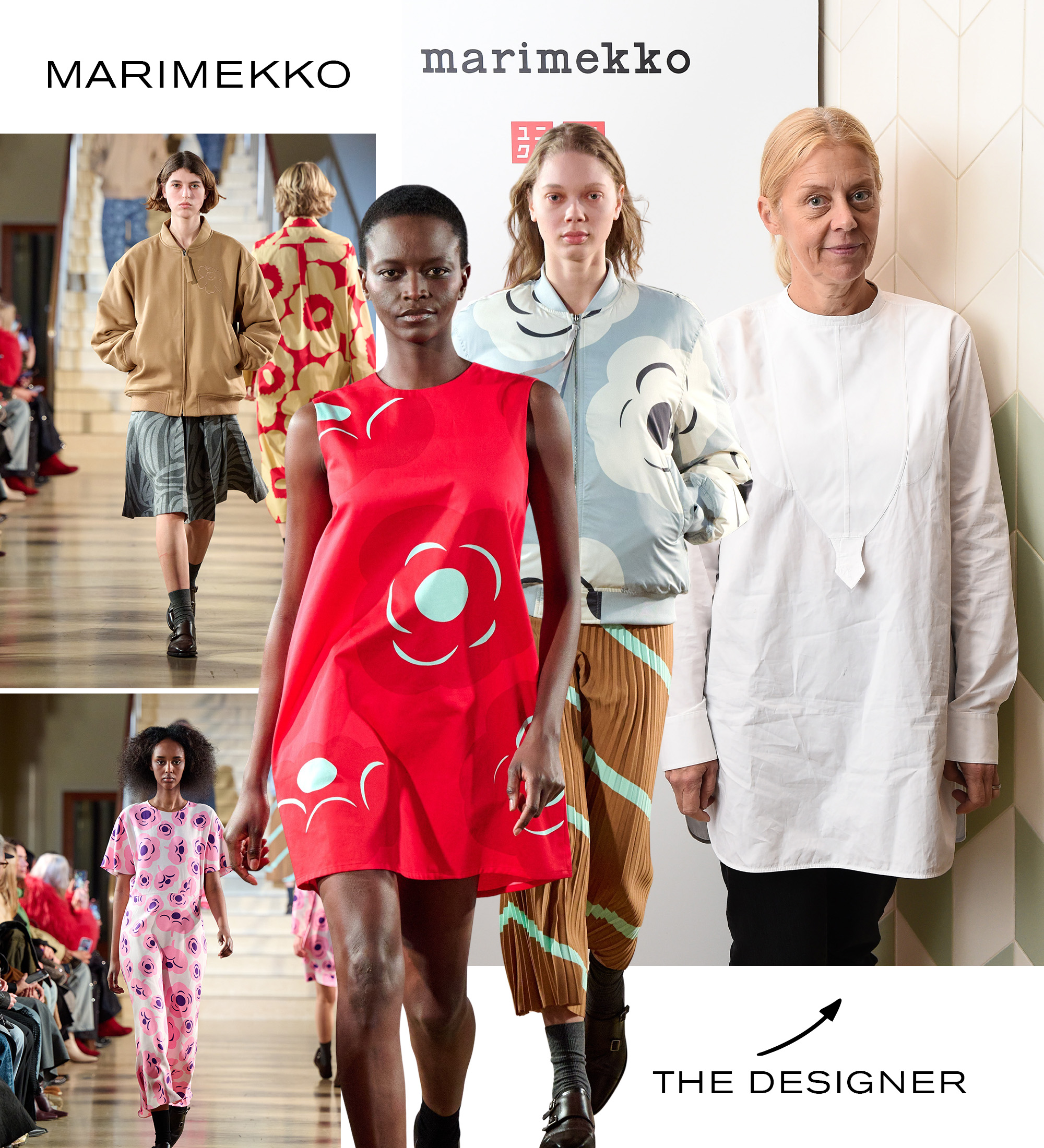
(Image credit: Courtesy of brands and Copenhagen Fashion Week. Images of designers: Getty Images.)
You may recognize Finnish brand Marimekko’s iconic flowers before you recognize Rebekka Bay, the woman behind it all. Although Marimekko has been around long before Bay entered the brand in the spring of 2021, the brand has seen a breath of fresh air since her arrival. Whimsical, colorful flowers aren’t just a key part of the brand’s design ethos; to Bay and her team, they’re a way of living—each runway collection or sustainable effort the brand undertakes a development of the living, breathing Marimekko collective.
It’s often said runway shows are the quiet before the storm. How long do you often work on your collections before showtime?
Around a year, but I think the way we tend to work is that one year flows somewhat into the next year. So, I think often the early thinking around a year: this year, we focused on the anatomy of flowers since we are celebrating the Unniko anniversary, so it actually came pretty early.
Of course, Copenhagen Fashion Week is such a pioneer within the sustainability space, as is Marimekko. In what ways does the brand bring responsible production and thoughtful consumption to the runway?
I think the first sustainability criteria for us, when ideating the collection, is to always aim for timelessness, both in quality and design. We never aim to be overly seasonal or overly trend-driven. I think already more than 80% of our materials are either recycled or organic in the collections, so we are constantly exploring new materials and innovation. How do we make things better? For example, we’ve started using algae binders to bind the print and fabric and keeping circularity in mind on our back end as well.
In Copenhagen, it feels like a lot of the brands are so community-driven, and often work in partnership, using the same production companies, stylists, or other elements. Do you have any special moments of collaboration you can share?
I think you’re really touching on an important point because I think part of the reason why we’re showing here and not somewhere else, is that Copenhagen [Fashion Week] is driven by a community spirit… We don’t see each other as competitors. I think we see each other as colleagues. There’s a real there’s a real desire to treat everyone equally. I’ve even made time to see some of the younger designers I’ve mentored and their shows this season. We acknowledge each other’s hard work.
What do you hope people take away from your collection this season?
At Marimekko, we want to bring joy to people’s everyday lives, and that is always what I hope we will do through meaningful, high-quality designs and styles. Of course, only you can define what joy is to you, but I really hope that we will leave this impression of hope and optimism. It’s amazing to be able to create a show and pull it all together, but the real moment of truth is when you see the collection living on the street, and you see our community start owning it.
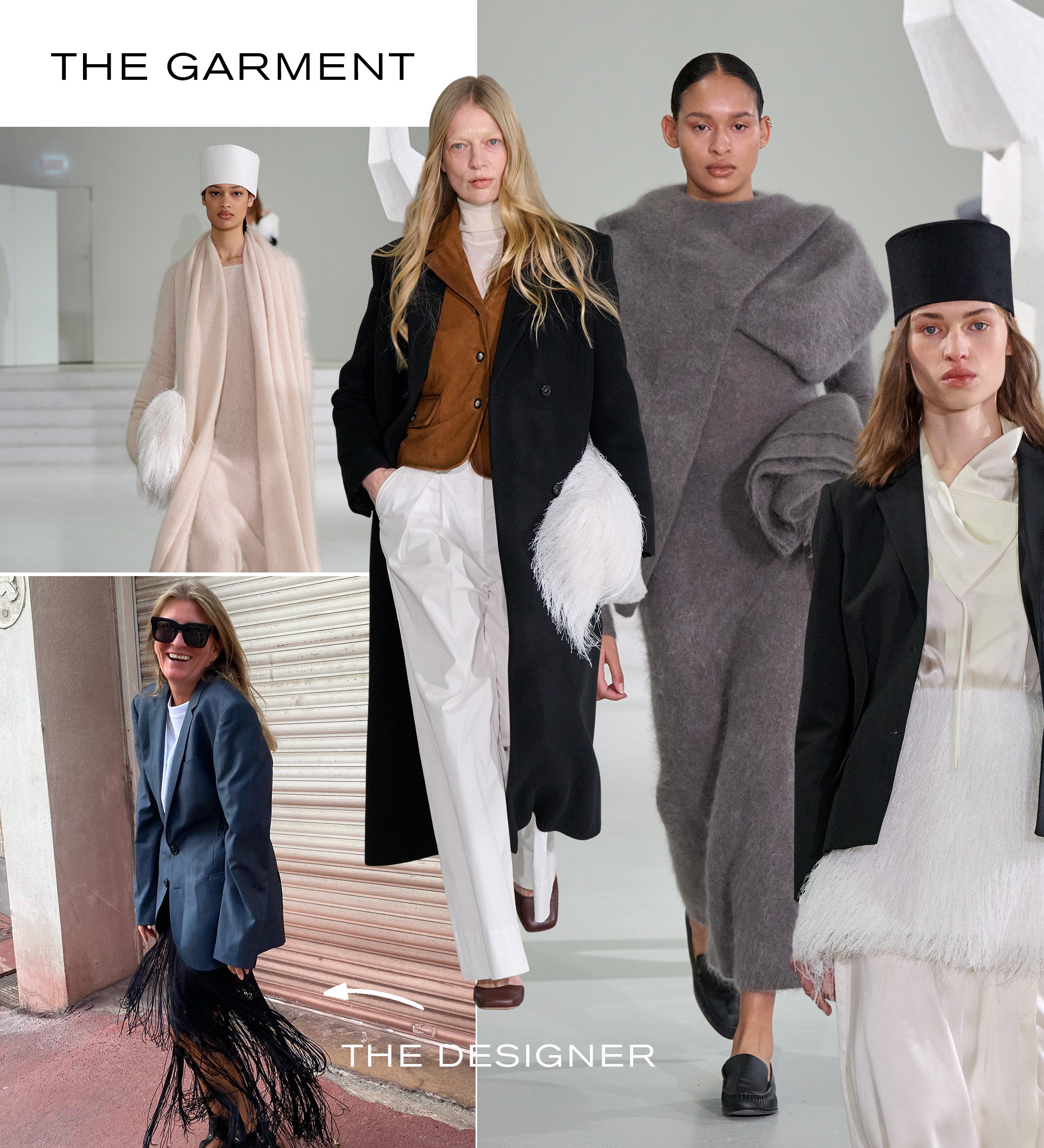
Although The Garment Creative Director Charlotte Eskildsen had long been in the fashion industry, it wasn’t until she became at the helm of the brand, co-founded with Sophia Roe in 2022, that she found her calling. With a priority on timeless minimalism and responsible production, each moment in the brand’s fall/winter 2025 show felt like a masterclass in elegant, intentional dressing. Beloved silhouettes, flowing chiffon fabrics, and statement box hats were all anyone could talk about in the moments after the show, with whispers from buyers, editors, and influencers alike saying it was one of the strongest collections the brand had had since being founded.
What do you hope people take away from your collection this season?
That minimalism is not about simplicity—it’s about intention. Every piece in our collection is designed to be lived in, to be part of someone’s story for years to come. I hope people feel a sense of ease, elegance, and responsibility in the way we approach fashion—not as fleeting trends, but as a meaningful extension of self-expression.
When most people imagine runway shows, they imagine these massive, elaborate sets and designs with hundreds of attendees and hundreds of thousands of dollars in budget, often paid by big corporations. Most of the labels showing in Copenhagen are independently owned, and naturally, much leaner and sincere in scale. What are some challenges you find you face as a smaller or independent brand or founder when it comes to pulling off fashion week?
As an independent brand, every decision is incredibly intentional. We work with a considered budget, so we have to be strategic in how we create impact. There’s no room for excess—we focus on craftsmanship, the right collaborations, and a storytelling approach that doesn’t rely on grandiosity but rather on authenticity. Finding the right partners who share our values in production, sustainability, and aesthetic is both a challenge and an opportunity to innovate.
What does your day look like the morning of a show? Are there any routines or pre-show rituals you partake in to ease the stress or set the tone for the day?
Mornings are about grounding myself before the whirlwind begins. I take a moment to breathe, review the final details, and check in with the team to ensure everything is aligned. There’s always a playlist playing in the background—music sets the mood and keeps the energy flowing. Before stepping onto the runway space, I remind myself of the intention behind the collection.
Be honest—have you slept?
Let’s just say sleep is a luxury during fashion week. It’s a delicate balance between adrenaline, excitement, and the last-minute perfectionism that keeps us up. But once the show starts, the exhaustion disappears—at least until the dinner.
https%3A%2F%2Fwww.whowhatwear.com%2Ffashion%2Frunway%2Fcopenhagen-fashion-week-fall-winter-2025-designers
#Copenhagen #Fashion #Week #MustHave #TicketThese #Designers
https://www.whowhatwear.com/fashion/runway/copenhagen-fashion-week-fall-winter-2025-designers

